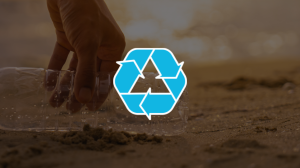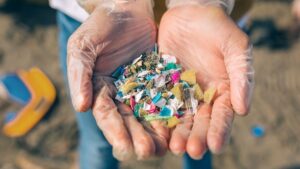Plastic pollution, explained
Plastics: we can’t live without them, or so it seems.
While using plastics in some cases may be unavoidable, we can take steps to reduce our constant consumption and discarding of the chemical-laced material.
The U.S. produces 234 pounds of plastic waste per person per year, and hardly any of it is recycled.
Here’s a comprehensive introduction to plastic waste and plastic pollution, how we got here, and what we can do about it.
The Problem:
Plastics are an untamed and unmanaged beast:
- More than 1 million plastic bags are used every minute, with an average “working life” of only 15 minutes
500 billion plastic bags are used annually—and that’s just plastic bags. - The ocean is expected to contain 1 ton of plastic for every 3 tons of fish by 2025 and, by 2050, more plastics than fish (by weight).
- Studies suggest that the total economic damage to the world’s marine ecosystem caused by plastic amounts to at least $13 billion every year.
Throwaway culture is a modern phenomenon that was slowly impressed upon the consumer after the Great Depression and war-era years of frugality. Through advertisement, the plastics industry had to convince the public that single-use plastics were possible, acceptable, and even necessary.
The recycling logo—one of the most recognizable images of the environmental movement—was created in a contest held by a plastics company. It’s an icon that persuades consumers we can continue to consume products and materials, because the cycle will create an ecological balance between production and consumption that mitigates the environmental impact.
Another reason plastic waste and pollution has amassed so quickly is the lack of legislation regulating plastics. As of May 2020, there are currently no federal laws restricting single-use plastics, the single highest contributor to plastic waste.
Congress could work to shape federal policy by modeling legislation after existing local and state laws passed to tackle the plastics problem.
Failure to recycle is placed on the individual consumer, not on the manufacturer—even though many common plastics can’t be recycled, and the fact that 91% of plastic not being recycled suggests a systematic failure.



